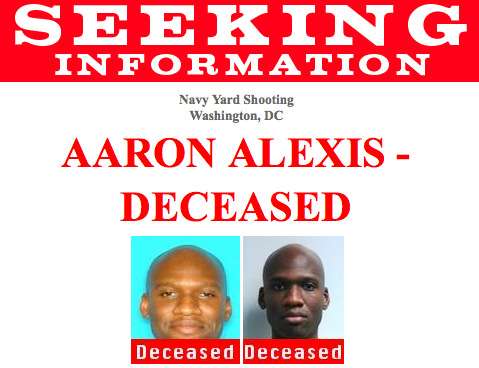Washington Navy Yard Already Suffers the Restrictions That Gun Control Advocates Favor

Yet another mass shooting, and flags fly across the country at half-mast to mourn the 13 dead at the Washington Navy Yard—well, 12 of them, anyway, since one of the bodies was that of the murderer. Gun control advocates wasted no time in demanding new restrictions on the means of self-defense. Sen. Diane Feinstein (D-CA), who used to carry a pistol for her own defense, responded to the crime by saying, "Congress must stop shirking its responsibility and resume a thoughtful debate on gun violence in this country. We must do more to stop this endless loss of life." But the unhappy truth is that the scene of the crime, the Washington Navy Yard, is subject to many of the restrictions that gun control advocates favor. And the perpetrator, Aaron Alexis, had passed a background check for a security clearance. Unfortunately, laws and databases don't create magic forcefields against criminal intent.
Navy public affairs officers have full voicemail boxes, today, for obvious reason, so it's difficult to learn if there were specific restrictions that applied to the Washington Navy Yard or to Naval Sea Systems Command Headquarters, where the shootings took place. But military installations, despite their obvious role in waging war, come pretty close to being gun-free zones, given the rules by which personnel and visitors must abide. Or, if not strictly gun-free-zones, they're subject to tight regulations that keep most (law-abiding) people largely disarmed.
Firearms regulations at military installations are sufficiently byzantine that the Quantico Shooting Club at Marine Corps Base Quantico, Virginia, cautions members and guests about them and maintains a listing of restrictions (PDF). In particular, U.S. Navy Regulation 1159 (PDF) states:
Except as may be necessary to the proper performance of his or her duty or as may be authorised by proper authority, no person in the naval service shall:
a. have concealed about his or her person any dangerous weapon, instrument or device, or any highly explosive article or compound; or
b. have in his or her possession any dangerous weapon, instrument or device or any highly explosive article or compound on board any ship, craft, aircraft, or in any vehicle of the naval service or within any base or other place under naval jurisdiction.
The Quantico summary clarifies interpretation of the rules for the base, adding, "Under no circumstances will the transportation of loaded or concealed handguns, shotguns, or rifles be permitted on MCBQ except under those situations outlined in paragraph 7 of this Order." That's specific to Quantico, but there's little reason to think that's at wide variance from policy anywhere else.
Then-President Clinton issued an order in 1993 (PDF) severely tightening gun restrictions at all Department of the Army installations. The directive said in part, "The authorization to carry firearms will be issued only to qualified personnel when there is a reasonable expectation that life or Department of the Army (DA) assets will be jeopardized if firearms are not carried." The same rules seem to apply to the other branches of service, to go by the Navy regulations above.
That makes military bases much like other "gun-free zones." They're only as well protected as the willingness of would-be perpetrators to follow rules allows, along with the ability of a thin line of personnel authorized to carry arms to deter or stop criminals.
And detecting would-be perpetrators isn't as simple as imposing ever-tougher background checks. Aaron Alexis passed such a check. "Alexis had a security clearance that was updated in July, approved by military security service personnel," said Thomas Hoshko, CEO at The Experts, Alexis's employer. That's despite being pushed out of the military "over a pattern of misconduct that included insubordination, unauthorized absences and other infractions" as well as two criminal incidents—one of which involved shooting out a car's tires. Alexis also reportedly sought help with mental health issues from the Veterans Administration.
And yet he received a security clearance last year which was renewed in July.
Background checks are only as good as the information in the database and the people running them. Alexis passed his background checks, then was issued credentials that allowed him to enter the Navy Yard, bypassing such armed security personnel as guarded the perimeter.
After that, he faced unarmed victims, deprived of the means to defend themselves. At this point the choice of weapons, nevermind Sen. Feinstein's fixation on AR-15s, was moot*.
This is gun control.
*Update: The FBI now says the weapons used by Aaron Alexis in the Washington Navy Yard attack were one shotgun and two pistols.


Show Comments (203)